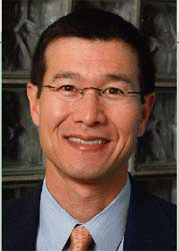As otolaryngologists and facial plastic surgeons, we are fortunate to have the opportunity to perform many challenging operations of the head and neck. Many would agree that rhinoplasty is one of the most complex facial plastic operations that we perform. Why is this operation so complex? First of all, whereas many of the other operations performed in otolaryngology have uniform, predictable anatomy, every nose has different anatomy, which is reflected by different nasal contours and deformities. For example, when performing a mastoidectomy, paranasal sinus operation, or neck dissection, the anatomy is predictable. This allows the surgeon to use a more uniform surgical approach to correct the underlying problem. When performing a rhinoplasty, however, no two patients have identical anatomy. This requires the surgeon to modify his or her technique based on the anatomical findings. The surgeon must choose a technique that is appropriate for the given anatomy and proposed aesthetic and functional goals. When a single technique is used for all rhinoplasties, the surgeon is not recognizing the variance in anatomy that should dictate how the structures of the nose are managed.
Explore This Issue
November 2006The other unique aspect to the rhinoplasty operation is the aesthetic component. Most procedures performed by otolaryngologists do not have an aesthetic consideration. Aesthetics have a significant subjective component and require a right-brained approach. Most operations in otolaryngology have well-defined outcomes. Hearing loss, tumor ablation, and incidence of infection are examples of more concrete outcome measures that can be used to measure the success of an operation. Success in rhinoplasty, though, is not easily defined. Patient satisfaction and functional outcomes can be measured, but success in the aesthetic outcome of rhinoplasty is not easily defined. This is another major reason why rhinoplasty is such a unique operation in otolaryngology.
Once the operation is completed, healing must occur in a favorable manner to attain a good long-term outcome. The healing in rhinoplasty continues throughout the patient’s entire lifetime. An outcome at one year can be drastically different from the outcome at 20 years. Rhinoplasty is one of only a few operations in otolaryngology with such variability in results over time.
Skills for Success
Success in rhinoplasty requires three major skills to reach a high level of competence. First of all, the surgeon must be a very good diagnostician. Analysis in rhinoplasty is critical to success because one must be able to correctly identify the problems in order to plan the correct surgery. One can be an excellent technician, but if the incorrect procedure is performed, the outcome is likely to be suboptimal. The surgeon also must be able to execute the operation properly. If the proper diagnosis is made and one has chosen the correct operation but failed to execute it properly, then a suboptimal outcome is more likely to occur. Finally, the surgeon must be a good clinician. This requires a person to be a good communicator and empathetic to the patient’s needs. Being a good clinician also requires one to be able to select good candidates for surgery and identify those who have unrealistic expectations or misguided motives for undergoing surgery. The surgeon also must be able to identify patients that have deformities that are beyond his or her level of expertise.

Leave a Reply